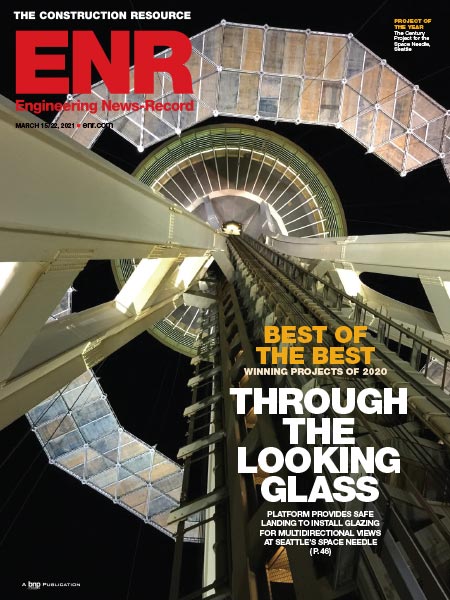Toyo Ito, a 71-year-old architect whose practice is based in Tokyo will be the recipient of the 2013 Pritzker Architecture Prize. Ito is the sixth Japanese architect to become a Pritzker Laureate—the first five being the late Kenzo Tange in 1987, Fumihiko Maki in 1993, Tadao Ando in 1995, and the team of Kazuyo Sejima and Ryue Nishizawa in 2010.
Ito began working in the firm of Kiyonori Kikutake & Associates after he graduated from Tokyo University in 1965. In 1971 he founded his own studio in Tokyo and named it Urban Robot (Urbot). In 1979 he changed the name to Toyo Ito & Associates Architects.
He has received numerous international awards, including in 2010, the 22nd Praemium Imperiale in Honor of Prince Takamatsu; and in 2006, The Royal Institute of British Architects’ Royal Gold Medal; and in 2002, the Golden Lion for Lifetime Achievement for the 8th Venice Biennale International Exhibition. Calling him a “creator of timeless buildings,” the Pritzker jury cited Ito for “infusing his designs with a spiritual dimension and for the poetics that transcend all his works.”
One of his first projects in 1971 was a home in a suburb of Tokyo. Called “Aluminum House,” the structure consists of a wooden frame completely covered in aluminum. Most of his early works were residences. In 1976 he produced a home for his sister, who had recently lost her husband. The house was called “White U” and generated a great deal of interest in Ito’s works. About most of his work in the 1980s, Ito explains that he was seeking to erase conventional meaning from his works through minimalist tactics, developing lightness in architecture that resembles air and wind.
He calls the Sendai Mediatheque, completed in 2001 in Sendai City, Miyagi, Japan, one of the high points of his career. In the Phaidon book, “Toyo Ito,” he explains, “The Mediatheque differs from conventional public buildings in many ways. While the building principally functions as a library and art gallery, the administration has actively worked to relax divisions between diverse programs, removing fixed barriers between various media to progressively evoke an image of how cultural facilities should be from now on.”
The jury commented on the project in their citation, saying, “Ito has said that he strives for architecture that is fluid and not confined by what he considers to be the limitations of modern architecture. In the Sendai Mediatheque, he achieved this by structural tubes, which permitted new interior spatial qualities.”
The jury also commented on Ito’s TOD’s Omotesando building in Tokyo, “where the building skin also serves as structure…. Innovative is a word often used to describe Toyo Ito’s works.” Citing the Municipal Funeral Hall in Gifu Prefecture, Tokyo’s Tama Art University Library, and London’s 2002 Serpentine Gallery Pavilion, the jury called attention to some of “his many inspiring spaces.”
Ito reacted to winning the prize: “Architecture is bound by various social constraints. I have been designing architecture bearing in mind that it would be possible to realize more comfortable spaces if we are freed from all the restrictions even for a little bit.
However, when one building is completed, I become painfully aware of my own inadequacy, and it turns into energy to challenge the next project. Probably this process must keep repeating itself in the future. Therefore, I will never fix my architectural style and never be satisfied with my works,” he wrote.
The formal ceremony for what has come to be known throughout the world as architecture’s highest honor will be at the John F. Kennedy Presidential Library and Museum in Boston on May 29. This marks the first time the ceremony has been held in Boston, and the location has particular significance since it was designed by another Pritzker Laureate, Ieoh Ming Pei, who received the prize in 1983.
In making the award announcement, Thomas J. Pritzker, chairman of The Hyatt Foundation, which sponsors the prize, said, “We are particularly pleased to be holding our ceremony at the Kennedy Library, and it is even more significant because the date is John F. Kennedy’s birthday.”
Pritzker Prize jury chairman Lord Palumbo, spoke from his home in the United Kingdom, quoting from the jury citation that focuses on the reasons for this year’s choice: “Throughout his career, Toyo Ito has been able to produce a body of work that combines conceptual innovation with superbly executed buildings. Creating outstanding architecture for more than 40 years, he has successfully undertaken libraries, houses, parks, theaters, shops, office buildings and pavilions, each time seeking to extend the possibilities of architecture. A professional of unique talent, he is dedicated to the process of discovery that comes from seeing the opportunities that lie in each commission and each site. ”
The purpose of the Pritzker Architecture Prize, which was founded in 1979 by the late Jay A. Pritzker and his wife Cindy, is to honor annually a living architect whose built work demonstrates a combination of talent, vision and commitment and who has produced consistent and significant contributions to humanity and the built environment through architecture. The laureates receive a $100,000 grant and a bronze medallion.
The field of architecture was chosen by the Pritzker family because of their keen interest in building, partly due to their involvement with developing the Hyatt Hotels around the world, and because architecture is not included in the Nobel prizes. The procedures were modeled after the Nobels, with the final selection being made by the international jury with all deliberations and voting in secret. Nominations are continuous from year to year with hundreds of nominees from countries all around the world being considered each year.


